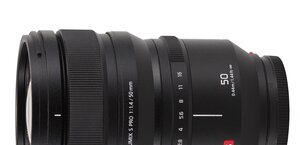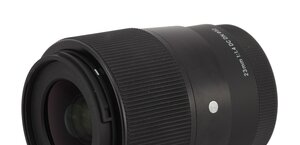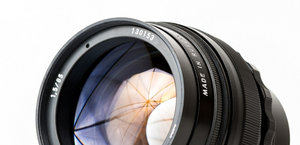Nikon Nikkor AF-S 300 mm f/4E PF ED VR
4. Image resolution
Let’s check how the tested lens compares here – the graph below shows its performance in the frame centre, on the edge of the APS-C/DX sensor and on the edge of full frame.

Please Support UsIf you enjoy our reviews and articles, and you want us to continue our work please, support our website by donating through PayPal. The funds are going to be used for paying our editorial team, renting servers, and equipping our testing studio; only that way we will be able to continue providing you interesting content for free. |
- - - - - - - - - - - - - - - - - - - - - - - - - - - - - - - - - - - - - - - - - - - - - - - -
It is not easy to assess the performance Nikkor 4/300 PF. The record values, mentioned before, and results of almost 50 lpmm are achieved by top-of-the-range fixed focus lenses with maximum apertures as fast as f/1.4-2.0 near f/4.0. If you stop them down by 2-3 EV you are able to cut off almost all optical aberrations and make the records possible. It would be difficult to expect something similar from the Nikkor 4/300 because f/4.0 is actually its maximum relative aperture, with optical aberrations still present and influencing images. By f/5.6 you limit them noticeably but stopping down by 1 EV is not enough to make diffraction the only limiting factor. You need to stop a good lens down by 2 EV to make optical aberrations disappear almost completely so, in the case of the Nikkor the f/8.0 aperture is the right one for a proper resolution assessment; by that aperture it reaches 42.1± 0.4 lpmm. How does this result compares to other telephoto lenses produced by the same company? You can mention here the expensive 2/200 VR model, which received a lot of praise; overall it was able to reach almost 47 lpmm but by f/8.0 it got to 40.5 ± 0.9 lpmm, a lower level than the tested Nikkor. One of the best resolution values achieved on the Nikon D3x belongs to the Zeiss 2/135 which, by f/4.0 got to almost 49 lpmm. By f/8.0 its resolution result amounted to just 44.3 ± 0.8 lpmm so only a bit better than the Nikkor 4/300 which is also by 2 EV slower.
I suppose it makes the situation pretty clear. The new Nikkor 4/300 PF VR doesn’t differ from the best system ‘primes’ on stopping down. If it was an outstanding lens you could expect 44-45 lpmm by f/5.6 and values about 1-2 lpmm higher by f/8.0 than those results you actually see. Its performance slightly lower than the perfection is forgivable, being most likely the effect of implementing a complete new technology.
Enough of digressions; looking at the real performance it would be difficult to have any reservations. The Nikkor AF-S 300 mm f/4E PF ED VR provides images of good quality in the frame centre already at the maximum relative aperture and on stopping down to f/5.6 – 8.0 they become actually very good. On the edge of the APS-C and full frame the photos are fully useful even by f/4.0. What’s more, there are no big differences between the frame centre and the edge of the detector. Our resolution assessment of the tested lens must be positive.
At the end of this chapter traditionally we present crops of our resolution testing chart photos taken from JPEG files which were saved along RAW files, used for the analysis above.
| Nikon D3x, JPEG, f/4.0 |
 |
| Nikon D3x, JPEG, f/5.6 |
 |






